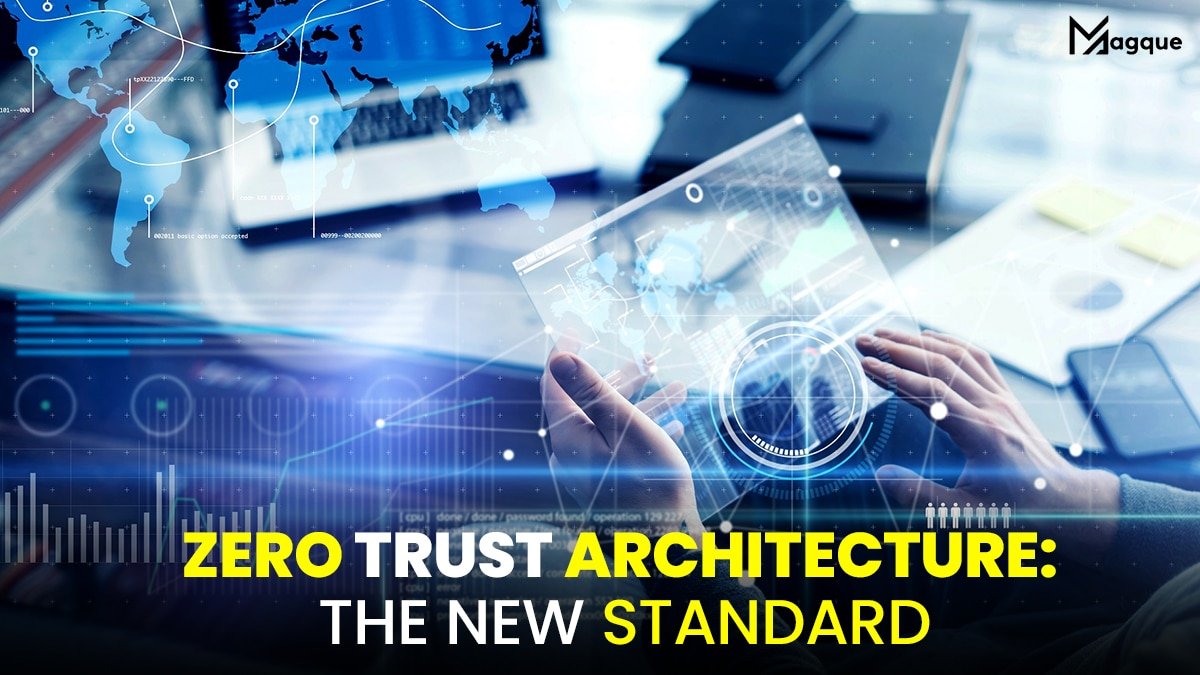Traditional security measures are proving inadequate in a digital age fraught with cyber threats, and data breaches need to be improved. Enter Zero Trust Architecture, a groundbreaking approach that challenges the conventional notion of trust within networks. But what exactly does this mean for the modern enterprise?
What is Zero Trust Architecture?
Imagine a fortress where every door and passage is guarded vigilantly, and no one is granted unrestricted access. This is the essence of Zero-Trust Architecture. Unlike traditional security models that rely on perimeter defenses, Zero-Trust operates on the principle of “never trust, always verify.” Every user, device, and application attempting to access the network is treated as a potential threat, requiring authentication and authorization regardless of location.
Why is it the New Standard?
In today’s interconnected world, the perimeter is no longer well-defined. With the rise of remote work and cloud computing, traditional security measures must be updated. Zero Trust Architecture addresses these vulnerabilities by adopting a holistic approach to security. Continuously verifying identities and monitoring activities mitigate the risk of insider threats and external breaches, making it the new standard for cybersecurity.
Benefits of Zero Trust Architecture
The benefits of Zero Trust Architecture are manifold. Organizations can better protect sensitive data and intellectual property by eliminating the assumption of trust. It enables granular access control, allowing administrators to enforce policies based on user roles and behavior. Moreover, Zero Trust promotes visibility and transparency, providing real-time insights into network activities and anomalies.
Implementing Zero Trust Architecture
Transitioning to Zero Trust Architecture requires careful planning and implementation. It involves assessing existing security measures, identifying vulnerabilities, and defining access policies. Organizations must invest in robust identity and access management solutions, encryption technologies, and continuous monitoring tools. Furthermore, employee training and awareness programs are essential to ensure compliance and adherence to security protocols.
Future Outlook
As cyber threats evolve, innovative security solutions are becoming increasingly urgent. Zero Trust Architecture represents a paradigm shift in cybersecurity, offering a proactive approach to threat detection and prevention. By embracing this new standard, organizations can stay ahead of emerging threats and safeguard their digital assets effectively.
In conclusion, Zero Trust Architecture is not merely a buzzword but a fundamental reimagining of cybersecurity. In an era where trust is a liability, adopting a Zero Trust mindset is imperative for businesses seeking to protect their assets and maintain customer trust. Embrace the new standard, and fortify your defenses against the ever-evolving threat landscape.
And be sure to explore Magque, your go-to source for the latest and most intriguing updates in the realms of informative tips & reviews!
FAQs
Q1. What exactly is Zero Trust Architecture?
Zero Trust Architecture is a cybersecurity framework based on “never trust, always verify.” Unlike traditional security models relying on perimeter defenses, Zero Trust assumes that threats can exist inside and outside the network. It requires continuous authentication and authorization for every user, device, and application attempting to access resources.
Q2. How does Zero Trust Architecture differ from traditional security models?
Traditional security models typically rely on perimeter-based defenses, assuming everything inside the network is safe. However, more than this approach is needed with the rise of remote work and cloud computing. Zero Trust Architecture adopts a more proactive stance by treating every access attempt as potentially malicious, regardless of the user’s location.
Q3. What are the key benefits of implementing Zero Trust Architecture?
Implementing Zero-Trust Architecture offers several benefits, including enhanced security posture, improved visibility and control over network traffic, reduced risk of data breaches, and greater flexibility for remote work and cloud adoption. Organizations can better protect their digital assets and sensitive information by eliminating the assumption of trust.
Q4. Is transitioning to Zero Trust Architecture complex?
Transitioning to Zero-Trust Architecture can be challenging, especially for organizations with existing legacy systems and traditional security measures. It requires careful planning, thorough risk assessment, and appropriate technology and training investment. However, the long-term benefits of enhanced security and resilience justify the effort.
Q5. How can organizations get started with Zero Trust Architecture?
Getting started with Zero Trust Architecture involves several steps, including assessing the current security posture, identifying critical assets and vulnerabilities, defining access policies, implementing appropriate security controls such as multi-factor authentication and encryption, and continuously monitoring and adapting to evolving threats. Collaboration with cybersecurity experts and leveraging industry best practices can facilitate a smooth transition to Zero Trust.
Read Also This – Zero Trust Networking A Paradigm Shift in Security



















